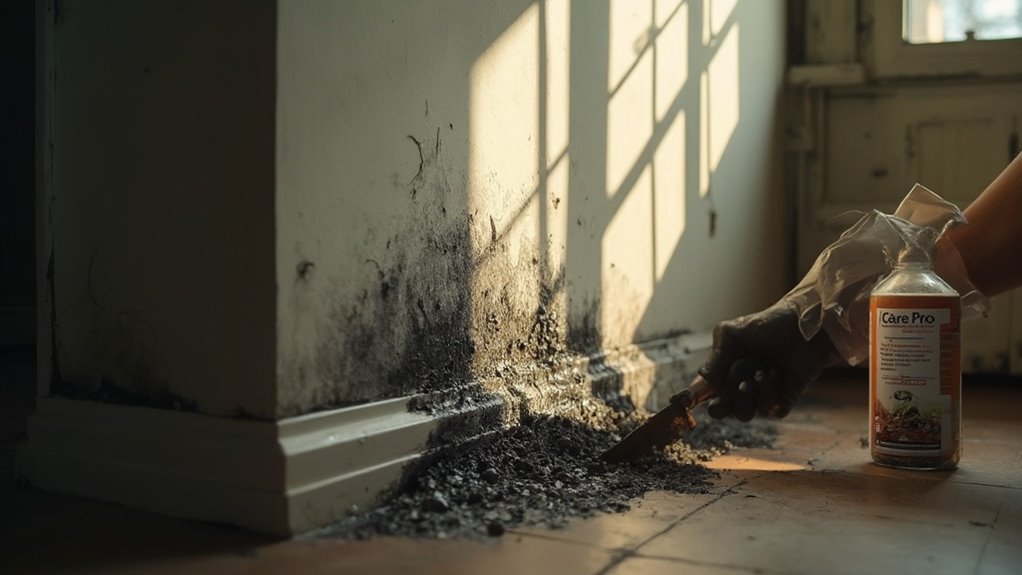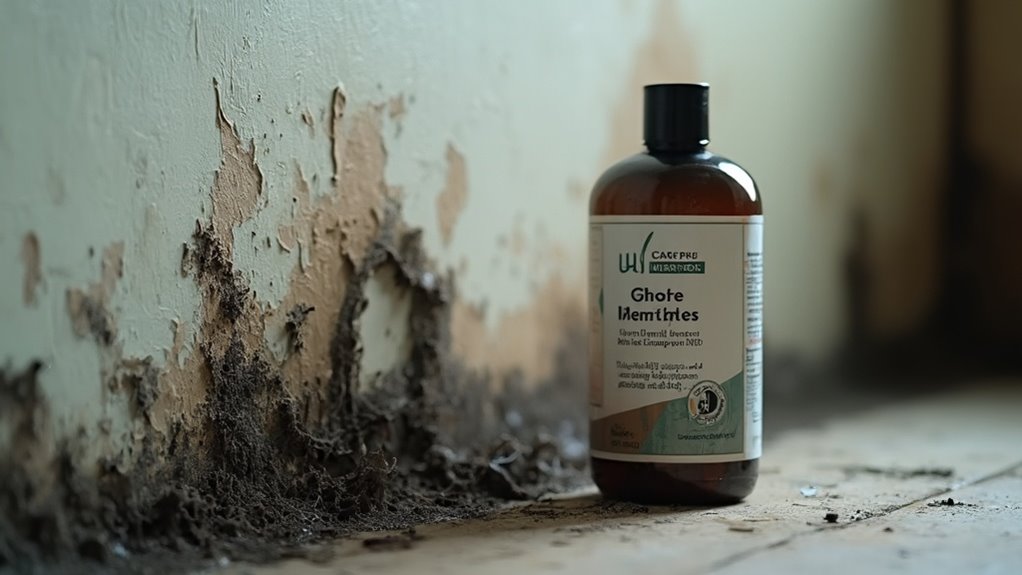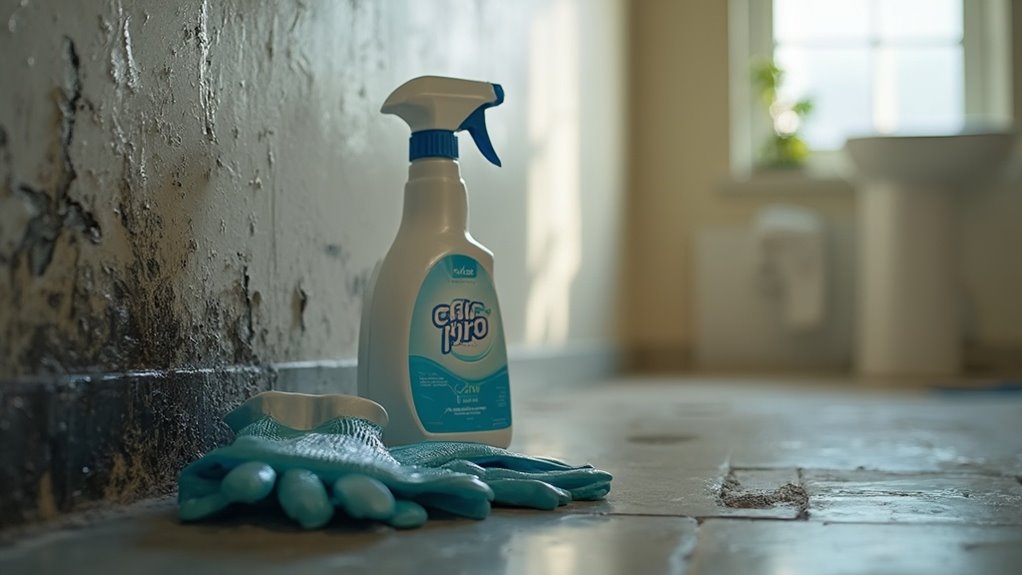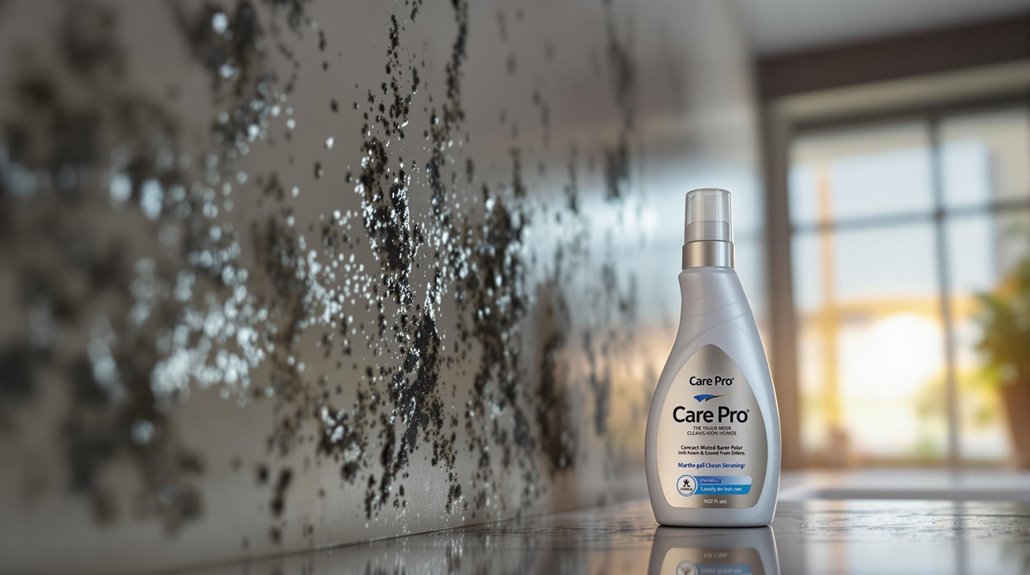Mold poses serious health risks, causing allergic reactions and respiratory issues, especially in vulnerable populations like children and the immunocompromised. Symptoms can include sneezing, coughing, and cognitive impairments because of mycotoxins. Effective moisture management is essential in preventing mold growth. Care Pro can help safeguard your home through thorough inspections, advanced moisture detection, and effective remediation strategies. They use antifungal treatments and implement preventive measures to maintain a dry environment, considerably reducing the risk of mold exposure. Uncover how Care Pro's expertise can improve your home's safety and protect your family's health.
Key Takeaways
- Mold exposure can lead to serious health issues, including respiratory problems, cognitive impairments, and allergic reactions, especially in vulnerable populations.
- Care Pro offers comprehensive mold inspections to identify both visible and hidden mold growth in your home.
- Advanced moisture detection technology used by Care Pro helps locate sources of dampness that contribute to mold formation.
- Care Pro employs robust containment strategies during remediation to prevent the spread of mold spores throughout your home.
- Preventive measures from Care Pro, such as antifungal treatments and moisture management, help ensure a healthier living environment and reduce mold recurrence.
Health Risks of Mold Exposure

Mold exposure poses significant health risks that can affect nearly anyone, regardless of their existing health conditions. Allergic reactions are common, with symptoms like sneezing, runny noses, and skin rashes frequently reported. Even individuals who aren't allergic may experience eye, skin, or respiratory irritation. Furthermore, mold can trigger asthma attacks, particularly in those already predisposed to the condition.
Chronic exposure can lead to severe respiratory problems, including persistent coughing and bronchitis. The mold spores act as allergens, potentially causing asthma in previously healthy individuals. Consequently, long-term exposure can leave you with lasting lung function impairment. Mold thrives in damp environments, making it essential to maintain proper humidity levels to reduce growth. Additionally, maintaining proper ventilation is crucial in preventing mold establishment and ensuring a healthier living space.
In addition, mold toxins, known as mycotoxins, may impact your cognitive abilities, leading to memory loss and difficulty concentrating. This disruption often extends to mental health, manifesting as anxiety and mood swings.
To mitigate these risks, regular mold testing is crucial for maintaining ideal indoor air quality. By identifying and addressing mold growth promptly, you can protect your health and that of your family. Ignoring mold issues could lead to serious health consequences, reinforcing the importance of proactive measures in your living environment.
Recognizing Mold Symptoms
Many people may not realize that exposure to mold can lead to a variety of symptoms that affect both physical and mental well-being. Recognizing these symptoms is vital for effective mold management. Common signs include sneezing, runny or stuffy noses, and itchy eyes, which indicate an allergic response. You might additionally experience respiratory issues like coughing, wheezing, or shortness of breath, especially if you have asthma; these symptoms can worsen your condition.
Along with respiratory problems, skin and eye irritations such as red, itchy eyes or dry, scaly skin are frequent complaints among those exposed to mold. General health symptoms, including sore throats, headaches, and even fever in severe cases, can likewise arise from prolonged exposure.
Employing mold identification techniques can help you detect the presence of mold in your environment, allowing you to take appropriate action. For instance, if you notice persistent symptoms that improve when you leave your home, it's vital to investigate further. Additionally, understanding the importance of immediate action can significantly reduce the health risks associated with mold exposure. Utilize symptom management tips like maintaining good indoor air quality and seeking medical advice to alleviate the adverse effects of mold exposure. Prioritizing this awareness can safeguard your health and improve your living conditions.
Who Is Most Vulnerable?

When it comes to mold exposure, certain groups face heightened risks. Children and adolescents, along with individuals with allergies or asthma, can experience severe health effects, while those who are immunocompromised are particularly vulnerable to infections. Understanding these vulnerabilities is essential for implementing effective prevention and intervention strategies.
Allergies and Asthma Risks
Allergies and asthma risks associated with mold exposure greatly affect vulnerable populations, particularly those with pre-existing respiratory conditions. Individuals with allergies are especially at risk, as mold spores can trigger allergic reactions, leading to symptoms like nasal congestion, sneezing, and sore throats. Common molds, such as *Alternaria* and *Aspergillus*, are notorious for exacerbating these issues.
For asthmatics, the stakes are even higher. Mold exposure can greatly worsen asthma symptoms, reducing lung function and increasing the likelihood of severe asthma attacks. Children, particularly those under seven, are at a heightened risk, with exposure linked to the development of asthma by age seven. Additionally, individuals with chronic lung diseases face increased vulnerability to mold-related complications.
Effective mold management is vital in safeguarding health. This involves regular inspections for mold growth, addressing moisture issues promptly, and ensuring good ventilation in your home. By prioritizing these strategies, you can mitigate allergic reactions and asthma risks, creating a safer living environment for you and your family. Recognizing and acting on these vulnerabilities is fundamental for maintaining respiratory health and overall well-being.
Immunocompromised Individuals Vulnerability
Immunocompromised individuals face a markedly heightened vulnerability to mold exposure, as their weakened immune systems struggle to fend off infections. This group includes transplant recipients, particularly those who have undergone hematopoietic stem cell transplants, and cancer patients undergoing treatments like chemotherapy. Immunosuppressive medications, such as corticosteroids, further compromise immune response, making individuals more susceptible to mold infections.
People living with HIV/AIDS likewise experience increased risks because of their naturally weakened immune defenses. Exposure to mold can lead to severe symptoms, including fever, respiratory issues, and skin manifestations, which may signal invasive mold infections. Symptoms can vary widely, depending on mold type and body part affected, often culminating in a general decline in health.
Risk factors for mold exposure additionally include environments with high moisture and humidity, as mold thrives in these conditions. Post-flood scenarios intensify the risks, highlighting the importance of immediate drying and professional inspection. For those who are immunocompromised, avoiding moldy environments and seeking medical advice upon experiencing symptoms is essential for safeguarding health and minimizing potential complications.
Children and Adolescents Concerns
Children and adolescents are particularly vulnerable to the adverse effects of mold exposure due to their developing respiratory systems and unique physiological responses. Prolonged exposure can lead to significant respiratory distress, especially in those with asthma or sensitive lungs. Inhaling mold spores irritates the lung lining, causing symptoms like coughing, wheezing, and shortness of breath. Studies indicate that children in mold-affected households experience a higher incidence of asthma—11% compared to 7% in non-exposed homes—highlighting the importance of mold education for parents.
Beyond respiratory impacts, mycotoxins from mold can affect mental health, causing confusion, anxiety, and mood swings. Neurological symptoms may manifest as headaches and impaired cognitive function, exposing children to risks that can affect their academic performance and social interactions. Skin and eye irritations are likewise common, signaling potential mold exposure.
Fostering community awareness about the dangers of mold is critical. Educating families on prevention, early detection, and remediation can safeguard children's health and well-being. By understanding these vulnerabilities, you can take proactive steps to create a healthier environment for your children.
Effective Prevention Strategies
To effectively combat mold growth, it's vital to implement a range of proactive prevention strategies in your home. Start with moisture management; fix leaky plumbing and any leaks in your building envelope immediately. Keep an eye out for condensation and wet spots, addressing the sources of moisture promptly. Maintain indoor humidity levels below 60% relative humidity (RH), ideally between 30-50%, to inhibit mold growth.
Incorporate strong ventilation practices by using exhaust fans in moisture-generating areas like kitchens and bathrooms. Open windows when weather permits to improve air circulation, ensuring furniture doesn't obstruct airflow. Always vent moisture-producing appliances, such as dryers, to the outside.
Regular maintenance and inspections are important. Conduct routine checks of your HVAC system, and clean wet spots within 48 hours. Inspect roofs, windows, and pipes regularly for leaks. On the materials front, consider using mold-resistant drywall and finishing products to strengthen your home against mold.
Types of Mold and Mycotoxins

Mold isn't just an unsightly nuisance; certain types produce mycotoxins that pose serious health risks. You need to recognize common indoor molds like Aspergillus, Penicillium, and Stachybotrys, as they can impact your health in various ways. Understanding the specific mycotoxins they release and their potential effects is essential for safeguarding your living environment.
Common Indoor Mold Types
In indoor environments, various types of mold can pose significant health risks and thrive under specific conditions. Understanding these molds is essential for effective mold identification techniques and indoor mold prevention.
Acremonium, often found in damp areas like drainpipes and humidifiers, appears white, pink, gray, or orange. This toxic mold can cause severe complications, especially for individuals with weakened immune systems. Alternaria, characterized by a dark green or brown velvety texture, spreads easily in moist conditions and commonly inhabits carpets and window frames, potentially leading to allergic reactions. Aspergillus can range in color from white to green and may produce harmful aflatoxins, while Aureobasidium, which appears pink or black, often lurks in bathrooms and kitchens.
Cladosporium thrives in both warm and cold environments, commonly found on wood and textiles. Fusarium, typically found in water-damaged materials, and Ulocladium, which requires large amounts of water, are significant concerns as well. Finally, Stachybotrys chartarum, or black mold, thrives in damp conditions and is particularly dangerous because of its potential toxicity. Recognizing these molds aids in effective prevention strategies and safeguards your home against hidden dangers.
Mycotoxins and Health Risks
Often overlooked, mycotoxins present serious health risks linked to various mold species found in indoor environments. These toxic compounds can originate from common mold sources, such as Aspergillus and Fusarium, and can lead to severe health issues. It's important to recognize the specific health effects associated with different mycotoxins.
| Mycotoxin | Source | Health Effects |
|---|---|---|
| Aflatoxins | Aspergillus | Liver cancer, hepatotoxicity |
| Ochratoxin A | Aspergillus, Penicillium | Kidney damage, potential carcinogen |
| Fumonisins | Fusarium | Oesophageal cancer, neural tube defects |
Exposure routes include ingestion, inhalation, and dermal contact. Mold testing is necessary to identify these contaminants and mitigate risks effectively. Controlling moisture levels is critical, as it prevents mold growth and subsequent mycotoxin production. Furthermore, understanding the susceptibility of certain populations, such as those with genetic predispositions, can help prioritize preventive measures. By safeguarding your home against mold, you can protect your health from the hidden dangers of mycotoxins.
Long-Term Health Effects
Living in an environment with mold can lead to serious long-term health effects that extend beyond immediate allergic reactions. Prolonged exposure to mold can greatly impact your respiratory health, potentially resulting in conditions like hypersensitivity pneumonitis, which causes lung swelling and scarring. You may likewise experience worsened asthma symptoms, leading to irreversible lung damage over time.
Chronic fatigue and cognitive impairments are further concerns. Mycotoxins can leave you feeling unrested in spite of adequate sleep, impairing your memory, concentration, and overall cognitive function. This can manifest as brain fog, affecting your daily life and decision-making abilities.
Additionally, the mental health implications of long-term mold exposure shouldn't be overlooked. Correlations exist between mold presence and increased rates of depression and anxiety, fueled by both physical ailments and the stress associated with mold remediation.
Utilizing effective mold remediation techniques is crucial, as it can mitigate these long-term health effects. Employing health monitoring strategies likewise allows you to track any emerging symptoms, ensuring you take proactive steps to protect your well-being. Addressing mold issues promptly can safeguard your long-term health and quality of life.
How Care Pro Can Help

When dealing with mold issues, Care Pro offers a detailed approach that guarantees your home is safe and healthy. Their mold inspection process begins with a meticulous examination for visible signs of mold, utilizing advanced technologies to detect hidden growth and identify moisture sources. By performing extensive mold testing, Care Pro accurately assesses the type and extent of the problem.
Once the inspection is complete, Care Pro employs robust containment strategies, sealing off affected areas to prevent further spore dispersion. Using physical barriers and negative air pressure, they guarantee the safety of your environment during the remediation process.
In the mold removal phase, Care Pro utilizes antifungal and antimicrobial treatments to eradicate mold colonies effectively. They responsibly dispose of infested materials while meticulously cleaning non-porous surfaces with EPA-approved biocides. Following this, they restore damaged areas and implement preventive measures, such as using special paint to block any remaining spores and maintaining a dry, well-ventilated environment.
Conclusion
As you consider the hidden dangers of mold lurking in your home, remember that ignorance isn't bliss. The symptoms can be subtle, creeping into your life and health without warning. You may think you're safe, but who knows what you're inhaling? Care Pro stands ready to shield you from these invisible threats. Don't wait—act now to guarantee your home is a safe haven, not a breeding ground for mold and mycotoxins. Your well-being depends on it.



